
2025 Backcountry Permit(Click the link above to download a fillable permit. 1 mb pdf download.)
Planning a trip into the backcountry? Careful planning and consideration is required to ensure your safety while traveling in Glacier Bay’s immense wilderness. Remember, safety is your responsibility! Abiding by all rules and regulations while in Glacier bay is also your responsibility.
Visitor Information Station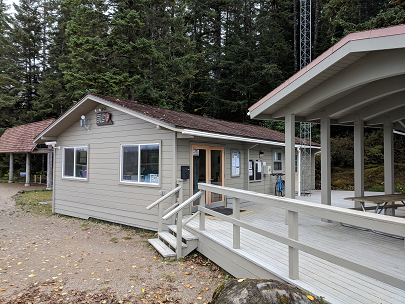
The Backcountry and Boating Office, commonly referred to as the Visitor Information Station (VIS), serves as the permit office and information center for backcountry users. The office processes all backcountry, campground, and boater permits, monitoring public use activities in the Bay in order to protect park resources and provide for visitor safety. Rangers can guide visitors through up-to-date information on regulations, closures, safety, logistical information regarding their trip, and provide local knowledge for the areas visitors may be exploring. Camping in Bartlett CoveCamping in Bartlett Cove is limited to the developed campground. Obtain a free campground permit from the Visitor Information Station between May 1 and September 30. Permits and detailed information is available on the Bartlett Cove Campground page. Backcountry Permits and OrientationFrom May 1 to September 30, all overnight backcountry users (including kayakers) must register for a free permit and complete a mandatory orientation in person at the Visitor Information Station. There is no limit to the number of permits issued per-day. The yearly orientation requirement is for your benefit: to answer your questions, inform you of special wildlife and safety closures, regulations, safety information, and to assist in planning your trip. The VIS has bear-resistant food canisters that you can check out for the duration of your trip. Please notify the VIS of any cannisters you may need when you apply for a permit. Please plan to attend your orientation in person at the VIS. 2024 backcountry camper orienations will be at 10AM and 2:30PM daily. Contact the Visitor Information Station at (907) 697-2627 for questions and additional information. 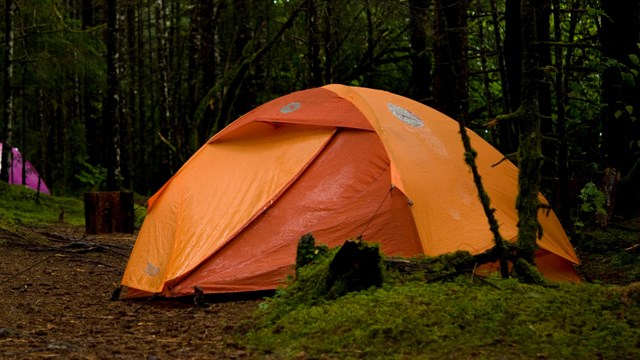
Bartlett Cove Campground
Glacier Bay's only campground is located along the shores of Bartlett Cove 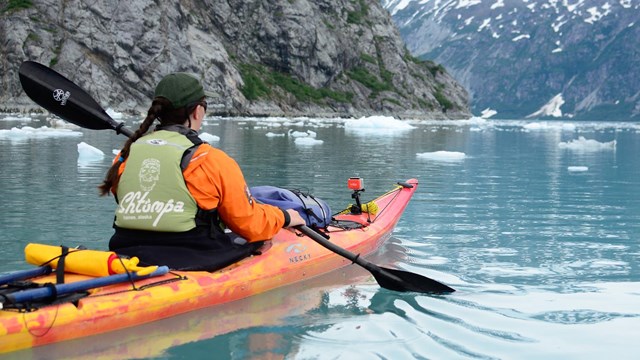
Kayaking
Learn more about kayaking in Glacier Bay 
Leave No Trace
Keeping Glacier Bay wild while exploring the backcountry Advisories and Temporary ClosuresWildlife, negative bear encounters, or other safety concerns will occasionally cause advisories to be issued or areas to be temporarily closed for overnight camping.
Nesting Bird Closure - From May 17 - August 31, Four islands in Glacier Bay are closed, and visitors & boats must maintain at least 100 yards viewing distance. The islands closed are two unnamed islands in Scidmore Bay and Tlingit Point, the Leland Islands, and Sealers Island. Johns Hopkins Inlet - Closed to all vessels, including kayaks, between 5/1 and 6/30 to protect essential seal habitat and nursery from disturbances. There are a number of islands that are closed year round. See a guide to park waters for closed critical wildlife areas. LogisticsTransportationGetting to Glacier Bay can be half of the challenge! Bartlett Cove and the nearby community of Gustavus are not located on a traditional road system. There is a single paved road that runs 9 miles between the airport in Gustavus and the public dock in Bartlett Cove. Please be aware that this imformation may be subject to change for the duration of the COVID-19 pandemic and travel and quarantine restrictions to the state of Alaska may apply. Please contact businesses directly with any questions.
Other Camper Resources
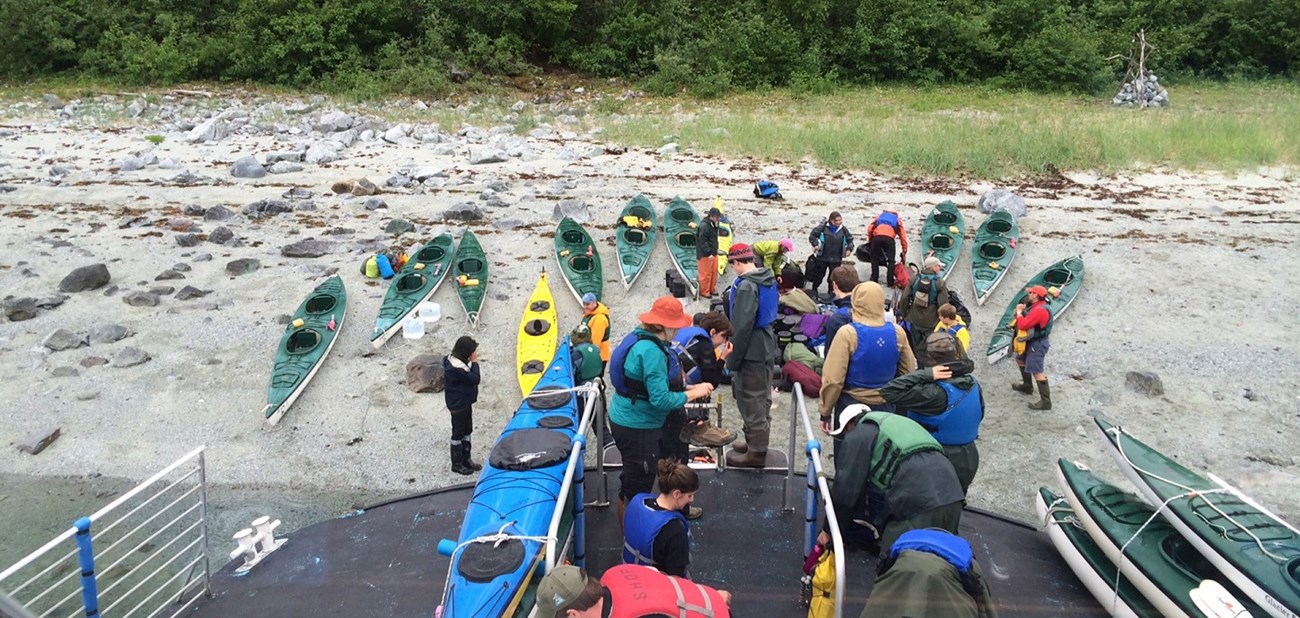
Camper Drop-off ServiceDuring the summer months, kayakers can arrange with Glacier Bay Lodge to be dropped off and/or picked up by the daily tour boat at designated camper dropoff locations upbay. Advance reservations are recommended for kayakers as the number of kayaks the daily tour boat can carry is limited. To make reservations, contact the Glacier Bay Lodge at 888-229-8686. Additional Reminders & SafetyThere are a variety of park regulations that pertain to both campers and kayakers. You are responsible for knowing and abiding by these regulations.
Freshwater availability depends on where you travel, but is usually easily found except on islands. All water should be boiled, filtered or treated for Giardia.
Emergency Contact InformationIn the event of an emergency in the backcountry it is important to have a reliable way to make contact with someone that can assist you. There is no cellular phone service in Glacier Bay. Many backcountry users now carry Personal Locator Beacons (PLB) and Satellite Emergency Notification Device like inReach or SPOT are also popular. Satellite phones provide a quick way to communicate. Please note that the Visitor Information Station does not have the capability to communicate directly with you using devices like inReach or SPOT. While satellite based devices are nice, carrying a simple handheld marine VHF radio will substantially increase your ability to make contact with outside help.

Group Size LimitsMaximum group size in wilderness is twelve people. Several areas are designated annually for commercial operators where multiple large groups may recreate at the same time. Otherwise, groups should space themselves to be out of sight/sound of others. Leave No TraceHelp us to ensure that future generations will enjoy Glacier Bay as it is today. Choose a campsite where you will leave little or no impact. A good campsite is found and not made. Campsites should be at least 100 feet from fresh water sources. Check at the Visitor Information Station for areas that are closed to backcountry use. Know these areas, and mark them on your maps and charts. Do not approach wildlife. Some animals are easily disturbed. You are responsible for knowing and following all applicable regulations during your visit to the park. Glacier Bay is wild, clean and unpolluted. Remember to carry out all trash (do not burn). Use the intertidal zone for campfires, and preparing and eating food. Generally, the next high tide will erase traces of your presence. Learn more about the seven principles of Leave No Trace in preparation for your trip. BackpackingMore than a million acres await the backcountry traveler, however there are no trails in the Glacier Bay backcountry. Dense alder thickets and steep rocky cliffs can make foot travel very challenging and often impossible. The terrain is rugged by any standard. Be prepared to hike over rough and rocky ground. Shoreline and gravel streambeds usually offer the best routes.
Off Season Backcountry TravelMost backcountry users visit between May and August. If you choose to take a trip during the off season, be aware that most services are closed and unavailable. You'll need to be self sufficient and prepared to visit with little or no support.
BearsBoth Black and Coastal Brown Bears are frequently seen throughout the park. These are wild animals and should always be considered to be potentially dangerous. When hiking, lessen your chance of a bear encounter by looking for bear signs, making noise, and traveling in groups. Consider carrying bear spray in the backcountry. It is important that bears never come in contact with human food, so NEVER leave food unattended. Keep a clean camp. Store food and any scented items in bear resistant food containers at least 100 yards from your campsite. Do all cooking and eating in the intertidal zone at least 100 yards from your campsite. If you do encounter a bear, remain calm, identify yourself as a human (talk to the bear) and stand your ground. Do not run. You can not outrun a bear and fleeing may trigger the bear’s chase response. TidesYou'll live and breathe by the tides here in Glacier Bay! A basic understanding of tides and currents is crucial to safely traveling in the backcountry. There is up to a 25 foot tidal offset and strong currents of up to seven knots. Standing waves, whirlpools and tidal rips are common in some parts of the bay (e.g. Sitakaday Narrows, Adams Inlet, Berg Bay, ect.) Familiarizing yourself with tides in Glacier Bay before you arrive is highly recommended. HypothermiaAn ever-present danger in cold climates is hypothermia, a condition created when you lose body heat faster than you create it. Early symptoms of hypothermia include slurred speech, trembling, exhaustion, stumbling, and impaired judgment. Unchecked, symptoms may progress to mental confusion, unconsciousness, and eventually death. Hypothermia can result from cold ambient temperatures between 30 and 60 degrees F, especially when accompanied by wind or rain. Should you get wet, you must be aware that hypothermia will likely follow. Take preventative action:Put on rainwear or warm clothes before you become soaked or cold. Ventilate or remove clothing layers before you sweat. Wrap sleeping bags and clothing in plastic bags. Eat high calorie food throughout the day before you become exhausted. Keep hydrated. Make sure all members of your party are aware of the symptoms of hypothermia and look out for each other. Treatment:The objective of hypothermia treatment is to rewarm as fast as possible. Begin by finding a spot out of the wind, removing wet clothing, and adding dry layers. "FEED AND HEAT." That is, first provide the body with quick calories that will enable it to produce heat (FEED). Simple foods such as candy bars and hot chocolate will be absorbed the fastest. Follow up with food containing more complex carbohydrates such as bread and fruit. "HEAT" means rewarm quickly by exercising and moving. Walk about or practice isometric exercises inside the tent or shelter. Body movement and exercise will usually affect rewarming considerably more than remaining still under piles of sleeping bags. Avoid alcohol as it increases heat loss. 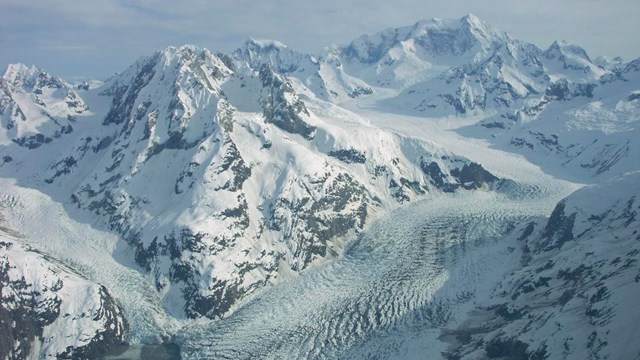
Mountaineering
Mountaineering in the Fairweather Range 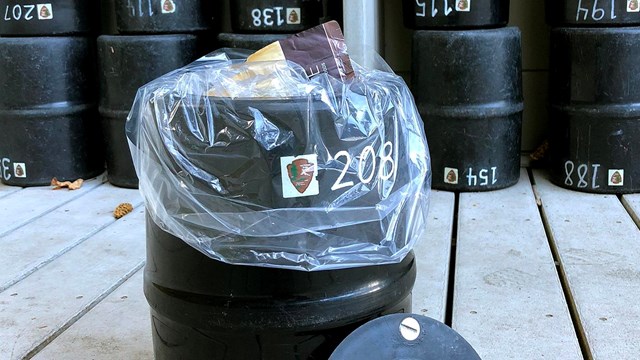
Bear-Resistant Food Canisters
Details on park-issued canisters-- and requirements for personal canisters 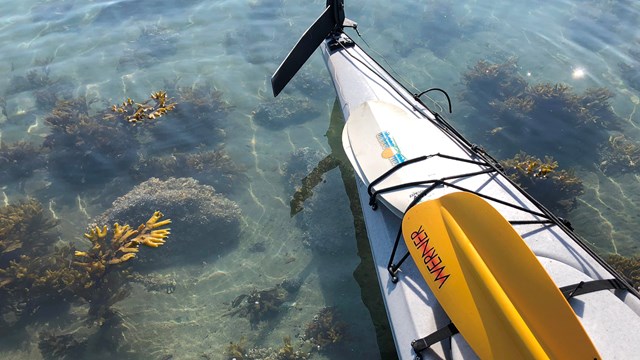
Tides in Glacier Bay
A safe, enjoyable kayak adventure begins with a solid understanding of tides | ||||||||||||||
Last updated: July 8, 2025
